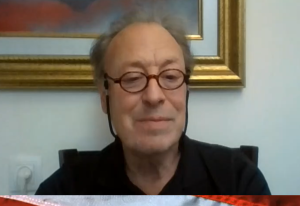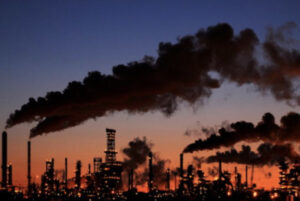Steve Bull's Blog, page 158
November 30, 2022
BP weighs ending its 70-year-old Statistical Review of World Energy
 An illuminated BP logo is seen at a petrol station in Gateshead, Britain, September 23, 2021. REUTERS/Lee Smith/File Photo
An illuminated BP logo is seen at a petrol station in Gateshead, Britain, September 23, 2021. REUTERS/Lee Smith/File PhotoLONDON, Nov 28 (Reuters) – BP (BP.L) is considering ending the publication of its Statistical Review of World Energy, over 70 years after it first published the benchmark report, as the energy major focuses on its shift to renewables, the company told Reuters.
The Statistical Review has been a go-to resource for the wider energy sector since it was first published in April 1952, providing detailed data on global oil, gas and coal production and consumption.
However the report has been seen by some BP executives as detrimental to the company’s new direction, sources told Reuters.
A BP spokesperson confirmed the company has launched an internal review of the report.
“We’re looking at options for publishing the annual Statistical Review of World Energy, but as yet we’ve taken no decision,” the company said.
“The world of energy is changing fast and becoming ever more complex, and our energy and economics team are focused on understanding different elements of the energy transition and their implications for BP.”
The company added that “the Review is a valuable source of objective and comprehensive data, and ensuring this continues is an important consideration.”
Chief Executive Officer Bernard Looney has radically shifted BP’s focus since taking office in 2020, aiming to sharply reduce oil and gas production while rapidly building a renewables business in order to slash greenhouse gas emissions.
The company has in recent years also cut its ties with several oil and gas associations and has sought to raise its profile as a clean energy provider.
“Put simply, it (Statistical Review) is bad PR,” one company source said.
The report is compiled by BP staff and in recent years with the help of the Edinburgh, Scotland-based Heriot-Watt University.
 BP Statistical Review
BP Statistical Review
Science Snippets: Peak Fossil Fuels
Latest peer-reviewed journal article appears in the prestigious Elsevier series of journals:
McPherson, Guy R., Beril Sirmack, and Ricardo Vinuesa. March 2022. Environmental thresholds for mass-extinction events. Results in Engineering (2022), doi: https://doi.org/10.1016/j.rineng.2022....
Full text:
When the head of the conservative International Energy Agency admits we are in the midst of the “first truly global energy crisis,” then you know we’re in serious trouble. According to the chief of the International Energy Agency—the IEA—that’s the current situation. The story was published by Reuters on 25 October 2022.
Let’s turn back the clock a bit. According to the IEA, the extraction of conventional oil for the world peaked in 2006. Conventional oil refers to crude plus condensate, and it’s the relatively easy oil to extract and refine. The tough stuff comes next, which is why we have been rabidly pursuing shale and other petrochemicals that have a low energy return on investment, often called EROI. It comes as no surprise that 16 years after the conservative IEA concluded we had passed the peak of crude-plus-condensate, the most important element in the history of industrial civilization, we have similarly, and in a much worse state, passed the peak of all oil. All, as in the whole shebang.
According to the headline of a story published on January 15th, 2021 by the U.S. Energy Information Administration, “Fossil fuel production expected to increase through 2022 but remain below 2019 peak.” Of course, the US EIA is referring to extraction, not production. It’s not as if humans are producing oil. Oil is not ice cream, after all. Even though we do not produce oil, we’re doing a great job sucking it out of the bowels of the planet and turning it into gasoline, diesel, and other energy-rich materials that make our lives easier..
…click on the above link to read the rest…
War Cycle Heats Up & Markets Tank in 2023 – Charles Nenner
 Renowned geopolitical and financial cycle expert Charles Nenner said, back in September, the markets would sink and then go back up. Both calls happened right on time. What does Nenner see now? Nenner says, “Two days ago, we started to take profits again. So, we are not that bullish. . . . The public we have now do not understand bear markets. . . . They don’t understand that we can have rallies of 15% to 20%, and then it can go down again. . . . So, we took profit and we are mostly in cash again. We are long in the bond market for a change because it looks like inflation is going to moderate for a little bit. We are waiting for the gold cycles to bottom, and we are getting very close, but the bull market in gold will come, but it’s still going to take a few more weeks.”
Renowned geopolitical and financial cycle expert Charles Nenner said, back in September, the markets would sink and then go back up. Both calls happened right on time. What does Nenner see now? Nenner says, “Two days ago, we started to take profits again. So, we are not that bullish. . . . The public we have now do not understand bear markets. . . . They don’t understand that we can have rallies of 15% to 20%, and then it can go down again. . . . So, we took profit and we are mostly in cash again. We are long in the bond market for a change because it looks like inflation is going to moderate for a little bit. We are waiting for the gold cycles to bottom, and we are getting very close, but the bull market in gold will come, but it’s still going to take a few more weeks.”
So, are interest rates on the way down? Nenner says, “Yes, but for very short term. You might remember our interest rate cycles bottomed, and the cycle is up for the next 30 years. I expect interest rates to go back to where they were in the early 1980’s. . . . Longer term interest rates are going much higher. Right now, we have a bounce because commodities are weaker, and I think they will be weak until around February. This is probably why the Fed is not going to talk as aggressive as they were talking. This is still temporary and interest rates are still going to go much higher in the future.”
Nenner also says, “Mortgage interest rates will go to the 8% to 9% range in 2023. . . .and the stock market will go down by about 50%.”
…click on the above link to read the rest…
Jeremy Grantham: What’s Coming is Worse Than a Recession
Lawrence Lepard: Fighting the Broken Monetary System
One Monetary Policy Fits All – Part II
In Part one of this series, Our Currency The World’s Problem, we discuss the vital role the U.S. dollar plays in the global economy. With an understanding of the dollar’s role as the world’s reserve currency, it’s time to discuss how the Federal Reserve’s monetary policy machinations influence the dollar and, therefore, the global economy and financial markets.
Given the Fed’s recent extreme monetary policy actions, which haven’t been seen in over 40 years, it is more important now than ever to appreciate the potential global consequences of the Fed’s stern fight against inflation.
Triffin’s Paradox
In Part 1, we highlight the following two lines, which help describe Triffin’s paradox.
“To supply the world with dollars, the United States must consistently run a trade deficit. Running persistent deficits, the United States would become a debtor nation.”
“Simply the growing divergence between debt and the ability to pay for it, GDP, is unsustainable.”
Increasingly borrowing without the means to pay it off is unsustainable. The terms zombie company or Ponzi Scheme come to mind when considering such a system. That said, because the printer of the currency and taxer of its citizens is in charge, we can only ask how long the status quo can continue.
The answer is partially up to the Fed. The Fed can use QE and low-interest rates to delay the inevitable. As we now see, the problem is that those tools are detrimental when there is high inflation. Fighting inflation requires higher interest rates and QT, both of which are problematic for high debt levels.
Financial Tremors
The Bank of England is bailing out U.K. pension funds. The Bank of Japan uses excessive monetary policy to protect its currency and cap interest rates…
…click on the above link to read the rest…
November 29, 2022
‘Gaslighting’ Is the Word of the Year for Good Reason
 Charles Boyer and Ingrid Bergman in “Gaslight” (1944). (Metro-Goldwyn-Mayer Inc.)‘Gaslighting’ Is the Word of the Year for Good Reason
Charles Boyer and Ingrid Bergman in “Gaslight” (1944). (Metro-Goldwyn-Mayer Inc.)‘Gaslighting’ Is the Word of the Year for Good ReasonEvery year, Merriam-Webster picks a word to capture the culture of a moment in time. The choice is based on the frequency and quantity of searches as well as the departure from the norm. This year, the choice seems perfect: gaslighting. It’s drawn from the 1944 film noir starring Charles Boyer and Ingrid Bergman.
The term means to be subjected to extended psychological trickery to cause the victim to question his or her own reality. In the film, Boyer plays a handsome stranger who meets the beautiful heiress Bergman on a foreign journey and they fall in love. He convinces her to marry and move back together to London to her family home, whereby he embarks upon a subtle campaign to convince her she is bonkers while he secretly searches the home for legacy jewels he intends to steal.
It’s painful to watch, but the experience connects with our own as we watch mainstream media, see respectable scientists canceled for supposedly spreading disinformation, or when we watch a White House press conference. They try to convince us that they are normal and we are the crazy ones, probably guilty of wrongthink or not aware of the full facts. The more they insist on their version of truth, the more we are invited to see ourselves as nuts for failing to give them all the benefit of our doubts.
The film has this crucial moment when Bergman flips from believing that she is a broken spirit and confused person suddenly to realizing that she is the victim of an elaborate hoax. Once she realizes this, and all the pieces fall into place, she calls him out as a fraud and a thief…
…click on the above link to read the rest…
World’s most-crucial fuel diesel heads for shortage touching everything
Within the next few months, almost every region on the planet will face the danger of a diesel shortage
 Photo: Bloomberg
Photo: BloombergNo fuel is more essential to the global economy than diesel. It powers trucks, buses, ships and trains. It drives machinery for construction, manufacturing and farming. It’s burned for heating homes. And with the high price of natural gas, in some places it’s also being used to generate power.
Within the next few months, almost every region on the planet will face the danger of a diesel shortage at a time when supply crunches in nearly all the world’s energy markets have worsened inflation and stifled growth.
The toll could be enormous, feeding through into everything from the price of a Thanksgiving turkey to consumer bills for heating homes this winter. In the US alone, the surging diesel cost will mean a $100 billion hit to the economy, according to Mark Finley, an energy fellow at Rice University’s Baker Institute of Public Policy.
“Anything and everything that gets moved in our economy, diesel is there,” Finley said. “Moving stuff around is one thing. People potentially freezing to death is another.”
In the US, stockpiles of diesel and heating oil are at their lowest point ever for this time of year in data going back four decades. Northwest Europe is also facing a low buffer — inventories are forecast to hit a low this month and then tumble even more by March, shortly after sanctions come into play that will cut the region off from Russian seaborne supplies. Global export markets have gotten so tight that poorer countries like Pakistan are getting shut out, with suppliers failing to book enough cargoes to meet the nation’s domestic needs.
…click on the above link to read the rest…
Peter Zeihan: You’re Being Instructed Not to Notice This!!!
The “Oil Curse” and Splashy PR Announcements of Oil Production Cuts
It’s not just the price of oil that matters: how much disposable income consumers have left to buy more goods and services matters, too.
The Oil Curse (a.k.a. The Resource Curse) refers to the compelling ease of those blessed with an abundance of oil/resources to depend on that gift for the majority of state/national revenues. The risks and demands of developing a diverse, globally competitive economy don’t seem worth the effort when the single-source wealth of oil offers such a low-risk bounty of revenues.
This dependence becomes a curse when the market value of the oil/resources plummets. Having come to depend on that seemingly inexhaustible source of massive revenues, even states that have set aside prudent reserves soon find their expenses cannot align down to diminished oil revenues without unbearable political/social pain.
The ideal solution to this problem is to jawbone oil prices higher by splashily announcing major cuts in oil production and then ignoring the proposed cuts to pump as much oil as possible to restore spending to politically viable levels.
The problem is every other oil producer is pursuing the same game plan and so production doesn’t actually decline. As global demand continues sagging in a global recession, oil supply remains at high levels. Since oil and other commodities are priced on the margin, even modest misalignments of supply and demand can generate huge swings in price.
There is no real enforcement of heavily promoted production cuts. The pressure on every oil producer is to assure the world they’re complying to cover the reality that they’re not actually cutting production because they can’t afford to lose any more revenues.
The price of oil appears to be reflecting the global recession that’s baked into receding stimulus and liquidity and higher inflation…
…click on the above link to read the rest…




